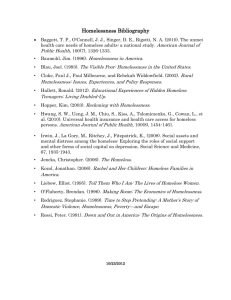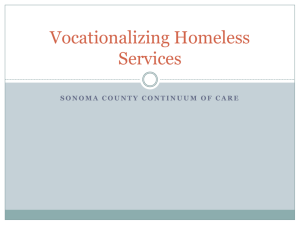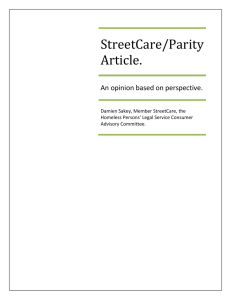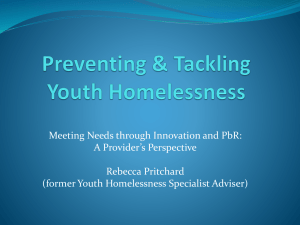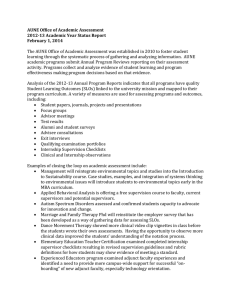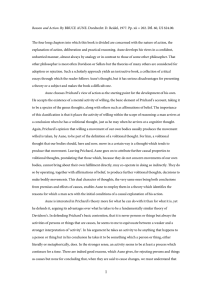Painopiste ennaltaehkäisevien työmuotojen kehittämisessä
advertisement
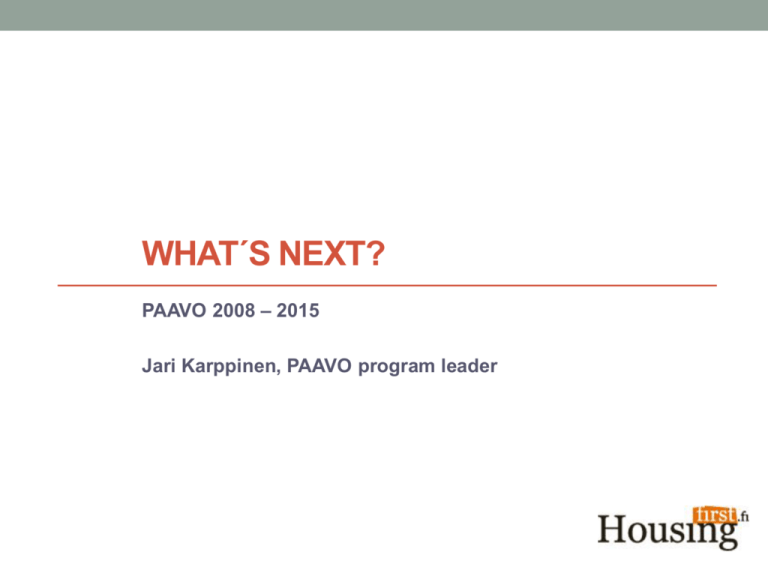
WHAT´S NEXT? PAAVO 2008 – 2015 Jari Karppinen, PAAVO program leader Why an international evaluation? • Good results from the international peer review in 2010: experience and views from other countries • Now the main focus is in the changing service stucture and finding innovative work practises. instructions for planning the future strategy • Interesting new outlook and openings The conclusions of the evaluation • A more thorough analysis on the materials after the observations and discussions during the second visit • An evaluaton report ready in 12/2014 • The report is published in 1/2015 • The results are utilized in planning the future strategy as well as policy work and developing services AUNE • Planning the strategy on homelessness for 2016-2019 • A working paper to be used as backgound material in planning the policy work (not a ready proposal) • Based on the preliminary proposal made last spring • The final policy proposal is made after a process of joint discussions and planning • The working paper and a link to send feedback : http://www.asuntoensin.fi/asunto_ensin/paavoverkostokehittajat/aune_-_valmistelu Goals The target is to integrate housing social work and the housing first principle in a more comprehensive and closer way to the policy on social integration and combating social exclusion. Goals: • To prevent homelessness and to improve prerequisities for housing • To prevent people from ending up homeless again Principles • Understanding the meaning of housing first and underlining the view of housing • Focus on prevention and identifying risk factors at an early stage • Participation, empowerment, integration and normal housing • Innovations and effectiveness • Regional and international connections Financing • The tripartite model in financing the work has perhaps been the most important factor in achieving good results in housing social work. The target is to complement the tripartite model with ESF-funds. • Negotiations with financiers during autumn 2014 • Discussions about financing also in the small PAAVO steering group during this autumn. Structures for cooperation More extensive and more commited cooperation • Better understanding of the operational environment in different cities and regions in the letters of intent • In international relations towards a more coordinated cooperation with countries tackling the same challenges (Denmark, the Netherlands). • Connections with other ongoing reforms, programs and projects ( SOTE = Social and health services reform, Youth guarantee) Evaluation The evaluation of the program in based on utilizing realtime evidence based information in a systematic way • HEAVY (A network of useful evidence) • Overall plan • Improving the methology in future research • Peer evaluations (experts by experience, people working in the services) connected as an integral part in the evaluation work Development work Experience from the coordination of the development work (Networking for Development project in Y-Foundation) has proved that it is reasonable to concentrate the coordination to a network project with sufficient resources • Continuity • Information about a great variety of development projects • Working in/with networks • Supporting experimentation, finding quick ways to test new work models Homelessness Prevention In preventing homelessness a coordinated multiprofessional cooperation of various admistrative sectors is necessary to utilize the expert knowledge in an effective way Minimizing the risks of homelessness + strengthening the protecting factors 2. 1000 rental aparments for homeless people per year. Measures to lower the threshold in renting to homeless people are developed 3. Influencing the structures and norms but also supporting the tenants to be able to keep their homes 1. Homelessness Prevention 4. Housing advice services are extended: they are available all over the country and also in private rental housing 5. Immigrant homelessness is not considered only as a problem of the individual but also as a matter of social integration, housing policy and developing welfare services 6. Housing & support are guaranteed for young people as a part of the Youth Guarantee, construction of youth housing is increased. 7. Special needs of various groups of homeless people are taken into account Preventing ending up homeless again 1.The principles in Housing First work are clarified and quality criteria are developed to steer the housing social work and procurement of services 2. Securing the housing for most vulnerable homeless people and testing new work models 3. Developing meaningful, low threshold daily activities A collective planning process • Development teams to work on spesific issues • A meeting of ministries • A meeting of financiers • Visits in the cities • Seminars and working groups • A summarized proposal 1/2015 Feedback received • All necessary fields of activities are not involved yet • • • • • (Still too much attention to housing questions) The roles of different services must be defined How is it possible to connect addiction treatment and mental health services more closely to homeless services AUNE must also be connected more closely to both the present and future policy programs and actions. At best it offers decision makers a solution to speed up the change in the organisational structure (without AUNE the social and health services reform will be ”hollow”) What are the key approaches in AUNE in the process of structural change? Which key features are selected? Pilot work on floating support • 12 process descriptions A service process and/or a description of the cooperation • Evaluation A model for self evaluation (practical tools, commensurate results Peer evaluation model for promising practices A research on cost effects of the models? Testing ACT in Finland • A desciption of the pilot work process Essential characteristics • A new way of planning services, coordination of multi diciplinary cooperation, reorganization of tasks and allocating resources a challenge to leadership • Developing service processes a challenge to create work models • The change: floating support, teams, work in pairs a challenge to professional identity and personal development Evaluation based on the special features in the work? Special questions? • How do we get enough affordable scattered housing Normal and permanent solutions (no need to move out when the support is ended) Why should I rent to a homeless person? • New challenges for networking Making multiprofessional teams and coordinating the work Best use of the special expertice in teams and the existing service network Encouraging work models for crisis situations • Reforming professionalism Working in someone else´s home New roles of workers • Cost efficiency in floating support • Loneliness and supporting social integration PREVENTING HOMELESSNESS: MANAGEMENT BY INFORMATION Data collection Processing and evaluating the data together Definition of policies, actions Follow-up work Executive group A review on homelessness Executive board in welfare services Defining Organizing Informing Youth guidance and service network PAAVOmanagement team Other organizations PAAVO Networking for Development & Research and Development House Ajatustalo Oy

